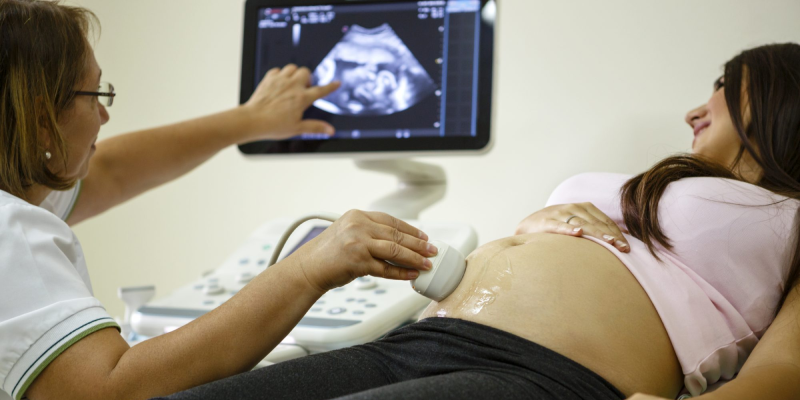


Our obstetrician may advise you to do USG to confirm pregnancy, health of baby, and growth of the baby and to rule out any anomalies at different times of pregnancy.
plays a crucial role in prenatal care by providing detailed images of the developing fetus and monitoring the progress of pregnancy. Here's how ultrasound scans are used during pregnancy:
Confirmation of Pregnancy: In early pregnancy, ultrasound scans can confirm the presence of a gestational sac within the uterus, indicating a viable pregnancy. This early ultrasound is often performed around 6-8 weeks gestation.
Dating the Pregnancy: Ultrasound scans are used to accurately determine the gestational age of the fetus, which helps establish the due date. Dating scans are typically performed in the first trimester, between 8-12 weeks gestation.
Assessment of Fetal Growth: Throughout pregnancy, ultrasound scans are used to monitor the growth and development of the fetus. Measurements of the fetal head circumference, abdominal circumference, and femur length are taken to assess growth patterns and ensure the fetus is growing appropriately for its gestational age. Anomaly Scan (Mid-Pregnancy Scan): Around 18-22 weeks gestation, a detailed ultrasound examination, known as the anomaly scan, is performed to assess the baby's anatomy and detect any structural abnormalities or congenital anomalies. This scan evaluates the brain, spine, heart, limbs, abdominal organs, and other structures.
Fetal Well-being Assessment: Ultrasound scans can assess fetal well-being by evaluating fetal movements, amniotic fluid levels, placental position and function, and fetal heart rate patterns. These assessments are important for identifying any signs of fetal distress or complications. Screening for Genetic Conditions: Some ultrasound markers, such as nuchal translucency (measured during the first trimester) and soft markers for chromosomal abnormalities (e.g., increased nuchal fold thickness), may indicate an increased risk of genetic conditions such as Down syndrome. Additional genetic testing may be recommended based on ultrasound findings. Multiple Gestation: Ultrasound is essential for diagnosing and monitoring pregnancies with twins, triplets, or other multiples. It helps determine chorionicity (number of placentas) and amnionicity (number of amniotic sacs) and assesses the growth and well-being of each fetus. Guidance for Procedures: Ultrasound may be used to guide certain prenatal procedures, such as amniocentesis or chorionic villus sampling (CVS), by visualizing the fetus and surrounding structures in real-time to ensure accurate needle placement and minimize risks. Overall, ultrasound imaging is a valuable tool in prenatal care, providing essential information about fetal development, well-being, and any potential complications. It allows healthcare providers to monitor pregnancies closely, make informed decisions, and provide appropriate care to ensure the best possible outcomes for both mother and baby.